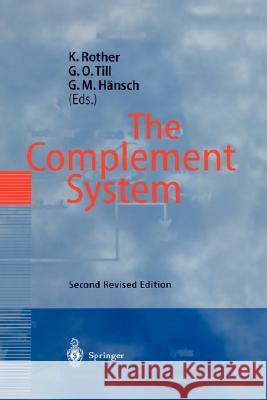The Complement System » książka
topmenu
The Complement System
ISBN-13: 9783540618942 / Angielski / Twarda / 1997 / 564 str.
The Complement System
ISBN-13: 9783540618942 / Angielski / Twarda / 1997 / 564 str.
cena 799,43 zł
(netto: 761,36 VAT: 5%)
Najniższa cena z 30 dni: 749,66 zł
(netto: 761,36 VAT: 5%)
Najniższa cena z 30 dni: 749,66 zł
Termin realizacji zamówienia:
ok. 16-18 dni roboczych.
ok. 16-18 dni roboczych.
Darmowa dostawa!
A presentation of various aspects of the complement system, which plays a key role in immunological reactions.











